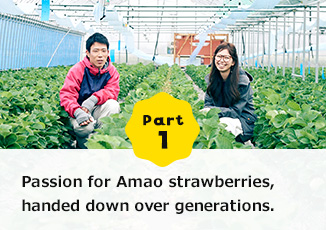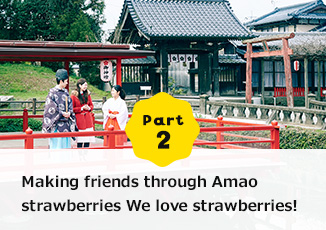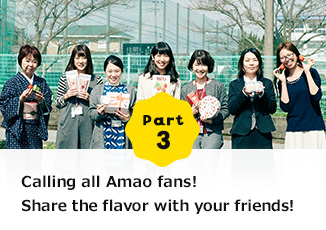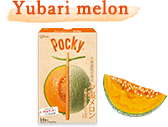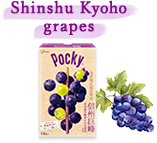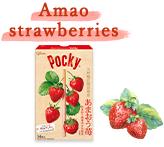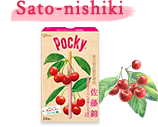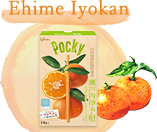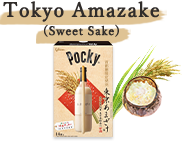Amaou’s hometown is a treasure trove of smiles
In the first installment, we learned about the cultivation of Amaou Strawberries and the locals’ enthusiasm for this fruit.
In this issue, we delve further into the region that gave us Amaou!
Just who or what will I meet? I’m excited!
Koinoki Shrine in Chikugo is considered Japan’s only shrine of its kind!
We tend to think of shrines as serious and solemn, but Koinoki Shrine has pink everywhere!
Koinoki Shrine enshrines Koinomikoto, a one-of-a-kind deity of love in Japan. The deity is worshiped for conferring good luck in matchmaking and love, with people constantly coming to its doors from around the country. Shrine staff say there are just as many male worshipers as there are female!
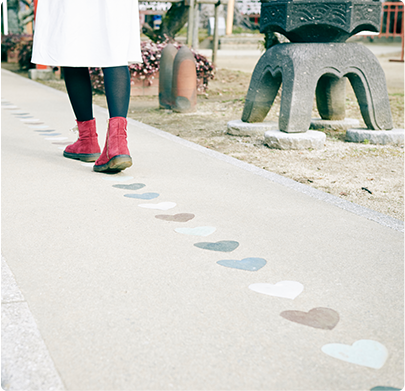
When Sugawara no Michizane passed away at Dazaifu, his deep respect for the emperor and his wife and child led to this shrine being constructed for the repose of his spirit.
The shrine crest is heart-shaped, so you will find hearts throughout the grounds.


Not just love -- also helps with forming stronger bonds
Koinoki Shrine is held to not only help with love, but with improving ties between married couples and at the workplace.
Worshipers at the shrine continue to come back to report the blessings they received!
Incidentally, Koinoki Shrine also hosts special weddings just for two. Couples who get together thanks to blessings conferred by the shrine often like to get married here.
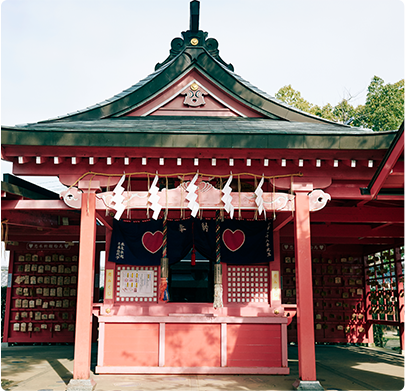
Improve your luck in love with love fortunes and votive tablets (ema)!
The majority of visitors to Koinoki Shrine like to draw love fortune slips or write a declaration on votive tablets.
In February, March, October, and November, the fortune slips are pink.
If you visit here, make sure to draw one of the pink love fortunes!
Naturally, you can also pray for matchmaking.
On the day I visited, some women were already there to say a prayer!
I’m newly married, so I had them say a prayer for the harmony of our marriage.
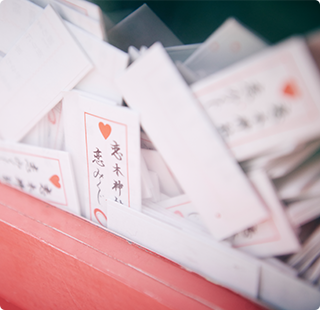
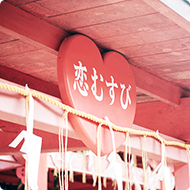
To get the favor of the gods, you need to show clear intent!
I came to the shrine with a greedy question on my lips...â€What is the best way to get my prayers to the gods to come true?â€
“You cannot rely on the gods like a crutch and think they will grant your every wish. You must show your own commitment internally. Have a clear image in mind. Visualizing helps lead to action. Everything starts by taking action.â€
That..that is an excellent point!
The gods are the allies of those who persevere. If you properly convey your commitment, they will be there to back you up when the going gets tough.
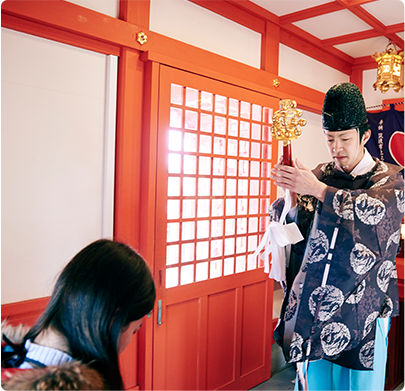
A smash-hit among locals!
Let’s share this “Love Parfait!â€
A 30 centimeter tall Love Parfait is the flagship item at the CAFE & PARFAIT RESTAURANT Woody, where locals like to go.
This fruit and berry parfait is chock-full of berries and fresh fruit, with the bright fruit and crisp sweetness of the ice cream combining to make you keep digging for more! Share with a lover, friend, or family member, and you’ll find each other nuzzled together by the time your spoons clink together at the bottom.

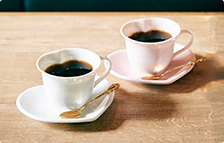
Also makes a great souvenir!
Spread the love!
Koinoki Monaka
This is a set of heart-shaped monaka wafers. Not only are they cute, but they are probably lucky, too! They come in matcha tea and strawberry flavor.
The faintly sweet bean paste blends perfectly with the crispy wafer!
Why not bite in while whispering, “May my love come true...â€
In fact, these wafers feature written messages of love. Test your luck and see what they say when you open one!
Sold at Funagoya. By the way, they’re also for sale at Koinoki Shrine!
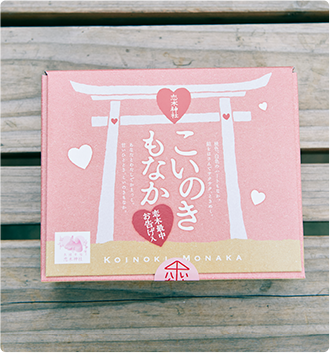
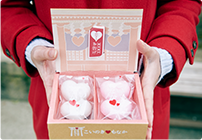
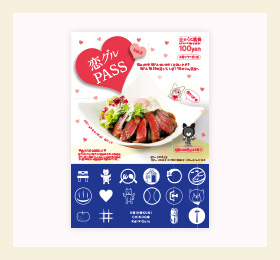
This guide zooms in on Chikugo, the land of love, to scoop restaurants, accessories shops, beauty destinations, and other “love†oriented entertainment.
So pick up a Koi-guru Pass and set off through town on a motivating journey in pursuit of love!
For details on the Koi-Guru Pass Vol. 3, click here
![]()
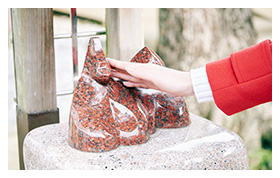
These are special matchmaking dolls found at Koinoki Shrine. When women touch the male doll, and men the female doll, they are said to gain luck with the other sex. When couples do, they will lead a harmonious life together! I have to bring my husband next time!
Trying our hand at traditional indigo dyeing in Hirokawa!
Through an introduction from the Hirokawa Indigo Market, I paid a visit to Yamai, a traditional weaver. This historic artisan workshop of kurume kasuri textiles is over 200 years old and has a retro appearance. This time around, I tried my hand at indigo dyeing at this workshop. Makiko Kakihara, an artisan, showed me the ropes. This was my first attempt to Hirokawa-style indigo!
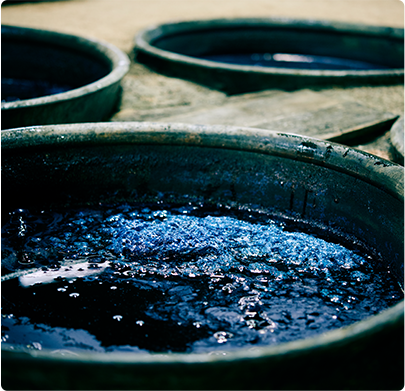
Kurume kasuri involves dyeing the yarn multiple times in indigo vats to make it richer.
This yarn is then woven by hand into a variety of patterns.For this lesson, I would be dying a white handkerchief indigo blue! The folds of the handkerchief would determine the final design.Just what will it look like? For this lesson, I would be dying a white handkerchief indigo blue! The folds of the handkerchief would determine the final design. Just what will it look like?


Natural blue is truly powerful!
Knotweed is fermented in the vats in order to create the indigo pigment. In winter, these vats are heated. You repeatedly dunk your fabric in the vats and then wring it out. My white handkerchief turned a deep blue before my eyes.
The color kept getting deeper...I wasn’t sure when to stop!
Finally, some brown residue remaining on the handkerchief is rinsed with water.
When we dunked it in water, the blue really came out in an instant -- it shocked me! According to Ms. Kakihara, the enzymes in the water turn the indigo a richer blue.
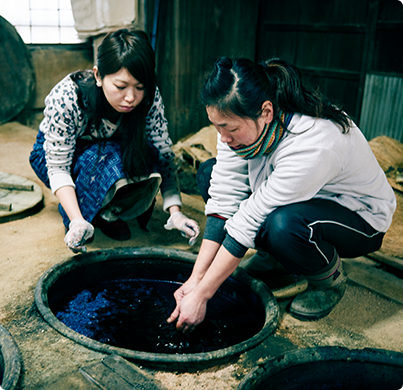
Yamai alo lets you try your hand at tie-dyeing. The complex designs of kurume kasuri textiles are apparently all done by hand. The dyed yarn is woven into shape based on different designs and requires very precise, detailed work. This process dictates the final quality of the product.
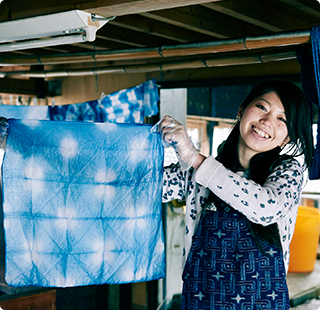

Yame blinds are a 100+ year-old tradition
Bamboo blinds contribute to the classical ambiance of Japanese buildings. Yame blinds have been produced for over 100 years and are a special folk craft designated by the governor of Fukuoka. I gained a special chance to see the way Yame blinds are made at Shikada Sangyo! The work floor was all artisans!
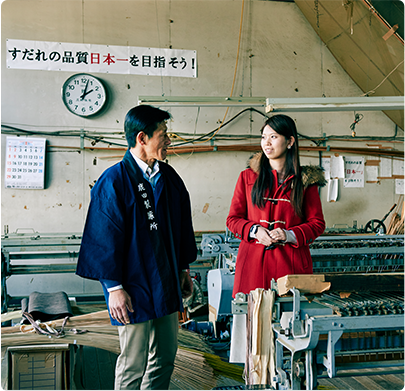
Blinds are used both at shrines and in modern interiors.
However, when you hear the name, you instinctively imagine the villa of a Heian period (From 794 to 1185) nobleman.
Blinds did contribute to creating a stately appearance for the homes of nobles. Among these, Yame blinds are considered a historical treasure for their quality.
Today, they are used at shrines and in modern interiors. The width is customized to the room and can range from a few centimeters to several meters. Shikada Sangyo makes the blinds to order for various purposes.
Simply adding one to a Japanese-style room creates a very refined look!
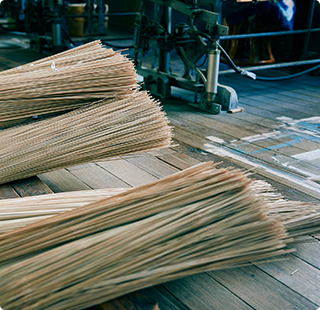
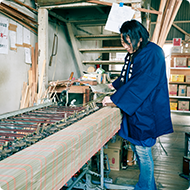
Working with bamboo, one piece at a time.
Amazing artisan craft!
One aspect of Yame blinds is that they are woven by hand. The process of weaving the blinds from strands of bamboo is done by artisans, all by hand.
Because bamboo has a natural curvature to it, simply aligning it is not enough to create the straight shape of blinds.
Getting them to sit straight requires artisans to check the exact position and surface of the bamboo to make it interlock properly.
The finished blinds are then trimmed with a vivid cloth!
It was amazing to see the blinds made by hand, one piece of bamboo at a time.
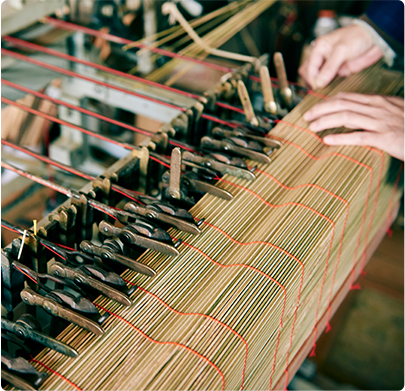
![]()
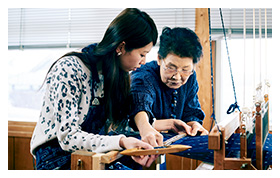
Experiencing Kurume kasuri hand weaving was a treat. Fumiko Yamamura, a veteran of this field, deftly worked up the weave with no difficulty.
It seemed easy, but for me, an amateur, things moved slowly, and my weave was inconsistent!
I learned that varying the pressure you apply is key to getting a lovely design!
How culture, history, and traditions make Yame-cha tea great
Yame in Fukuoka is one of Japan’s signature gyokuro tea producing regions. Yame-cha tea focuses on quality over quantity, with each tea leaf growing proud and strong. This tea has a rich flavor and a sweetness that you can taste as it goes down. It is not very astringent or bitter, so it has long been held as one of the luxury grades of tea.
In this installment, I went out to Konomi-en, a tea trader that has operated since the Edo period (1603-1868). In the Meiji period (1868-1912), they even exported Japanese tea overseas. Being inside of the historic shop, you seem to forget the flow of time itself...
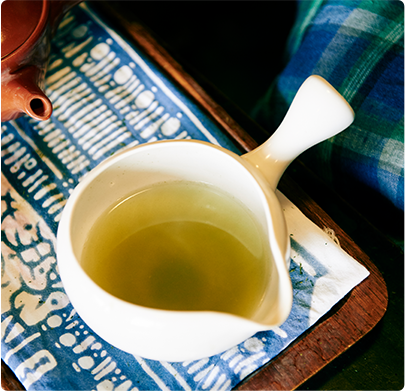
At Konomi-en, they still perform the roasting by hand. This is a crucial process that determines the final flavor of the Yame-cha tea. Yame washi paper is placed over coals and the tea is roasted.
It is heated slowly for 50-60 minutes and divided up to heat the tea leaves to their core.
Artisans check the texture and flow of the leaves while adjusting the roast. The time it takes to roast can vary by the weather, temperature, and humidity that day, so this process cannot be done by machines.
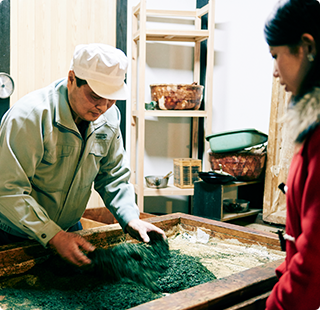
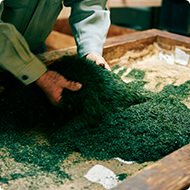
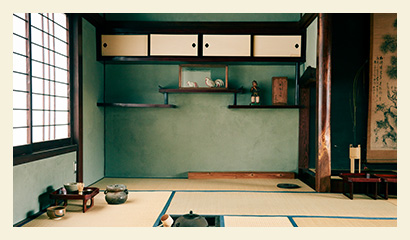
*This teahouse is not normally open to the public. Konomi-en occasionally exhibits it.
Temperature is key to good tea! The sign of good tea is a good taste even at low temperatures.
The owner of Konomi-en says that good products remain appealing forever.
Apparently, they continue revamping the Yame-cha tea and the shop interior, preserving its good qualities while staying current.
They taught me the key steps to pouring a delicious cup of tea!
The key point, above all else, is the temperature. Gyokura is a grade of luxury tea that is best served at about 50 degrees Celsius. It has a rich flavor, so a lower temperature conveys the aroma and taste better. Each type and grade of tea is suited to different temperatures. You should try adjusting your temperature to the type.
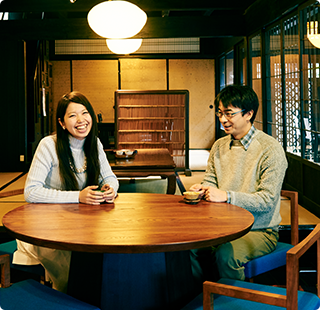
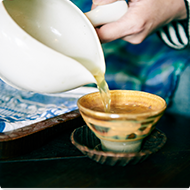
I turned a corner and was transported back!
Yame has some classical streetscapes to see
In Fukushima-cho in Yame, you will find a traditional streetscape alive and well today. This area was once a castle town and was where the merchants congregated. The traditions of those days are still carefully preserved.
Ms. Yamada, a volunteer guide, graciously showed me around town.

You can really tell this was a merchants’ town!
There are lots of little details built into the structures as a boon for good luck in business
We visited Sakai-ya, a historic building in Yame. Built by a merchant, this home has various little elements that were built in as a wish for prosperity in business.
For example, the room size seems disjointed, hopping around from ten and a half tatami mats to seven and a half tatami mats. But this is actually a play on words: “half a mat†is pronounced “han-jo,†which is a homonym for “success in business.â€
The interiors are also deliberately black as a wish for accounts to be “in the black.†Taking a stroll while listening to these interesting anecdotes really makes you feel like you have stepped back in time!
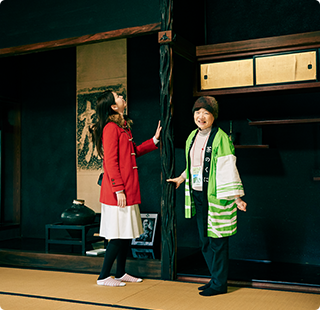

![]()
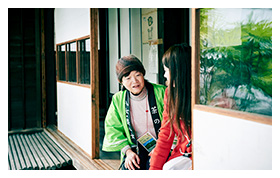
My guide knew so much about the town! She was an endless font of knowledge.
I hope this historic town and its rich nostalgia of the merchant days and history as a castle town will remain this way forever.
I think Yame-cha tea will also be my new favorite!


I was so touched by the kindness of people in Fukuoka!
The stylish traditional crafts were also amazing.
This town that produces Amaou Strawberries is also home to super-kind people! I hope prideworthy traditional crafts will continue to be passed down to the next generation.

















